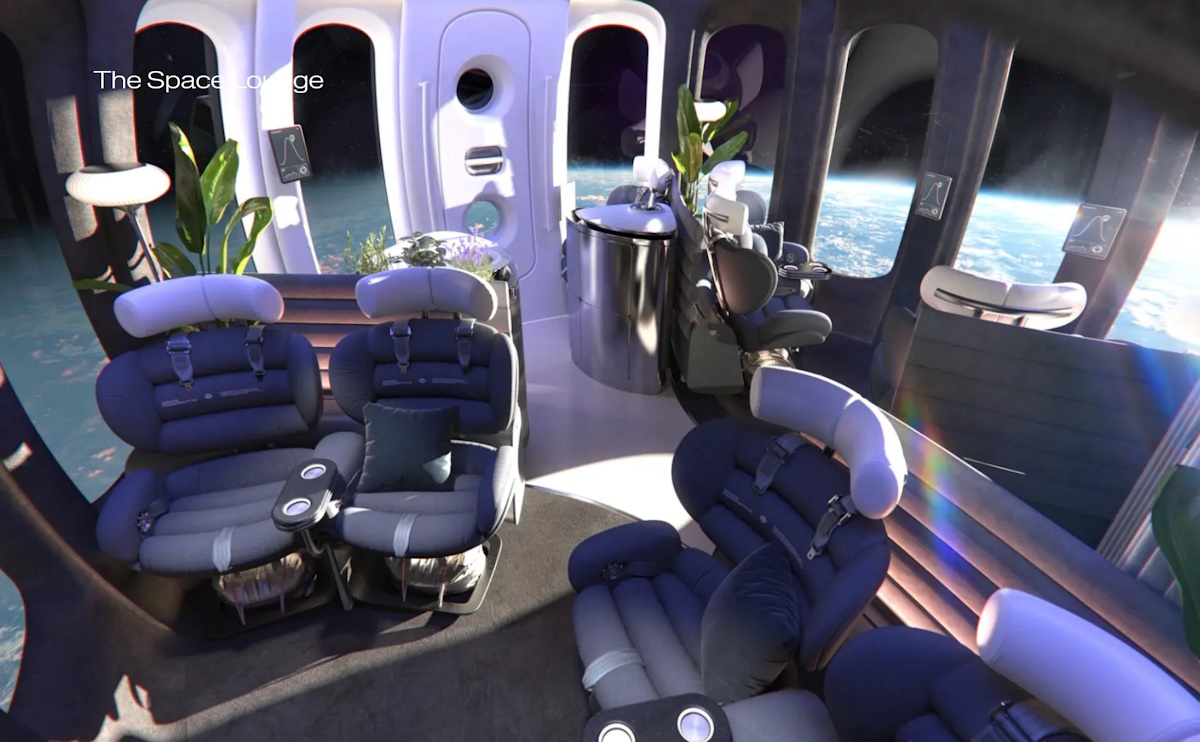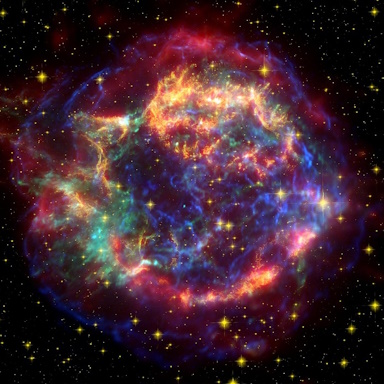I love pretty much everything to do with space, especially the things we find in it, like galaxies, black holes, stars, planets, moons, comets, asteroids, and… well, you and me now that I come to think about it.
I feel a little catch in my throat and a tear in my eye every time I watch the video of the first moon landing and I hear Neil Armstrong say, “Houston, Tranquility Base here. The Eagle has landed” (I just watched it again with the same reaction as usual).
I viewed with awe when William Shatner and other members of the crew floated around in zero gravity during his flight on the Blue Origin spacecraft. I remember thinking about how cramped the Apollo command capsules were, and wondering what Neil Armstrong would have thought to see Blue Origin.
I know that most science fiction depictions get “space” wrong, like when they show the asteroid belt as looking like a crowded freeway, giving you the impression that trying to move around in the belt would be a bit like the classic video arcade game Frogger from the 1980s. In reality, of course, the average distance between asteroids is around 600,000 miles.
Having said this, I always enjoy watching the opening title sequences to TV series like The Orville. I want to go into space so much I can taste it (it tastes almost as good as a bacon sandwich). Strange to relate, literally as I was typing the preceding paragraph, an email from Space Perspective “pinged” its way into my inbox. Accompanied by awesome imagery, this email read as follows:
Embark on a transformative journey with Space Perspective, the world’s first carbon-neutral spaceflight experience. Ascend above 99% of the Earth’s atmosphere in Spaceship Neptune’s pressurized capsule, powered by our cutting-edge SpaceBalloon. During this six-hour voyage, you’ll experience a breathtaking panorama: the curvature of Earth, the enveloping blackness of space, and the thin blue line of our atmosphere. This perspective, often described by astronauts as life-changing, will be yours to savor in comfort, safety, and style.

SpaceBalloon (Source: Space Perspective)
Although I already knew in my heart of hearts that I couldn’t afford this, I foolishly clicked on the “Book Now” button. My eye was immediately caught by the “Total $1,000” line. I was reaching for my credit card when I saw that this $1,000 was only the “Total Refundable Deposit”; the actual cost per “Explorer Seat” is $125,000.

Space Lounge (Source: Space Perspective)
I’m drooling over the image of the Space Lounge (eat your heart out William Shatner). I believe they throw in a “free” pair of headphones (I wonder if they’d give me a discount if I offered to bring my own).
The reason for my meandering musings is that I was just chatting with Dr. Gerard Van Belle, who is Director of Science at the Lowell Observatory in Flagstaff, Arizona, United States. I visited the observatory about 20 years ago with my little brother, Andrew (he was about 35 at the time, but he’ll always be “Little ‘Bro” to me). We also got to see Meteor Crater, which is about 45 miles from the observatory and was created about 50,000 years earlier.
The observatory was founded by Percival Lowell of Boston’s Lowell family. Lowell was an American businessman, author, mathematician, and astronomer. In addition to promoting his beliefs that there were canals on Mars (which may have sparked H.G. Wells to write War of the Worlds), Lowell furthered theories of a ninth planet within the Solar System. He established the Lowell Observatory in 1894 and formed the beginning of the effort that led to the discovery of Pluto by Clyde Tombaugh in 1930, which was 14 years after Lowell’s death. (Can you imaging Clyde’s feeling of joy when he realized he had tracked down the elusive “Ninth Planet”? Clyde passed in 1997, so he never got to see Pluto being relegated to a “dwarf planet” in 2006.)
As an aside, the observatory is going to have a new visitors’ center called the Marley Foundation Astronomy Discovery Center, which is scheduled to open in November 2024. I’ll have to go back to see that!
I’m back. I know, you didn’t even know I’d gone. I just got sidetracked into looking at some of the awesome images captured by the observatory’s various telescopes. Consider the photo of NGC 4565 (also known as the Needle Galaxy or Caldwell 38) below. This shows an edge-on view of a spiral galaxy about 100,000 light years in diameter (similar to our own Milky Way) and about 40 million light years from Earth.

The Needle Galaxy (Source: Lowel Observatory)
The reason I was chatting with Dr. Gerard in the first place is that I’d just heard on the grapevine that we are expecting to see a nova explosion sometime between now (May 2024) and September 2024, and I wanted to learn more from the “astronomer’s mouth,” as it were.
Dr. Gerard and I conversed for ages (much longer than he was expecting—or hoping—probably), bouncing from topic to topic with the agility of young mountain goats (so it’s lucky I was dressed appropriately), but it’s probably best if I summarize things as follows…
Let’s start with the concept of a red giant, which is a luminous giant star in a late phase in its evolution. A red giant would have started life as a star much like our own Sun, although it could be anywhere up to around eight solar masses. Toward the end of its life, this type of star’s shell of plasma starts to expand dramatically. This will be the fate of our Sun in about 5 billion years, when it will become so large that it will engulf Mercury and Venus, and possibly Earth as well. Eventually, it will collapse in a catastrophic manner—its outer layers will blow away, leaving its small, dense, inner core remaining as a white dwarf.
A white dwarf is hot and dense. It’s composed of electron-degenerate matter, so a white dwarf with the same mass as our sun will have a volume comparable to the Earth (larger suns may explode into supernovas or collapse into neutron stars or end up as black holes).
Although a white dwarf is no longer undergoing nuclear fusion, it’s still hot. It can start off at over 100,000°C, gradually cooling over tens of billions of years until it ends up as a black dwarf, which doesn’t emit any energy.
When I originally heard that we were going to see a “nova,” I must admit that I was thinking “supernova,” but I was mistaken. A supernova occurs during the last evolutionary stages of a star that’s much more massive than our sun. There are several pathways for a star to go supernova. One is where the star has been busily converting hydrogen to helium, then helium to progressively heavier elements, until it reaches iron. When the star attempts to fuse iron, it hits something called the “iron catastrophe,” because fusing iron consumes more energy than it generates. As a result, the core quickly collapses—we are talking less than one second—at which point the rest of the star realizes that “the floor has fallen out from under it.” There’s a lot more “stuff,” but the result is a mindbogglingly humongous explosion that, among other things, generates all the elements above iron, which means we (you and I) are literally made from stardust.
However, we aren’t talking about a supernova here. What we are talking about is a star system called T Coronae Borealis, or T CrB, that’s located about 3,000 light years from Earth in the constellation Coronae Borealis.

Locating Coronae Borealis via the constellation Hercules (Source: NASA)
Dr. Gerard tells me that T Coronae Borealis is actually a binary system formed from a red giant and a white dwarf orbiting each other. They are so close that the white dwarf can pull hydrogen off the red giant. Over time, this hydrogen forms what we can think of as a “sea” a few meters thick blanketing the white dwarf (my brain is wobbling on it’s gimbals trying to imagine what this must look like). At some stage, the hydrogen heats enough to cause a runaway thermonuclear reaction that blows itself and the surface layer of the white dwarf off, and this is what we call a nova.
In fact, T Coronae Borealis is a “recurrent nova” because it keeps on happening approximately every 80 years or so. The last occurrence was in 1946, and the one before that was in 1866. T Coronae Borealis is normally far too dim to be seen with the naked eye, but it will jump to magnitude +2 during the event, which will make it similar in brightness to the North Star, Polaris. Astronomers started seeing some “wibbly wobbly” things happening about a year before the 1946 event, and they saw the same “wibbly wobbly” things last year, which is why they are predicting this nova to occur sometime between now and September.
On the one hand, this isn’t going to affect us in any way. If you think about it, all we are really talking about here is a star system we usually can’t see (one you and I never even knew existed) that will become a star system we can see for a few weeks. So, why are we so excited about it? I posed this question to Dr. Gerard, who responded, “I think we’re excited about it in much the same way that ancient humans were excited by things like this because, by and large, the night sky doesn’t change. Apart from the Moon, the two main categories of things seen in the sky by ancient humans were the fixed stars and the planets, which were moving but not winking in and out, so to have something brand new caused quite a stir. And I think maybe there’s still a bit of that visceral reaction left over in our ancient primitive brains.”
He’s right. I can feel stirrings in the ancient primitive portion of my own brain as I pen these words. I’m going to start looking at the night sky, learning how to locate the constellation Coronae Borealis, and keeping a watchful night eye open for the predicted nova. How about you? Will you be watching with me?





